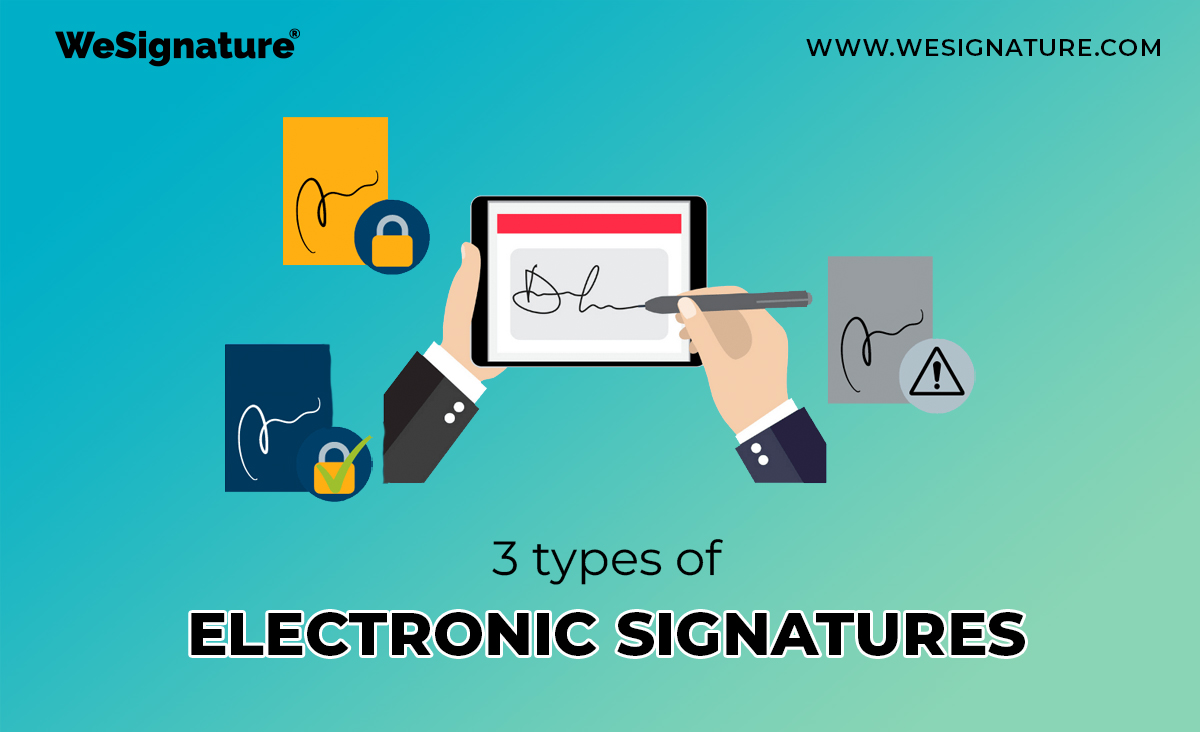In recent years, an increasing number of educational institutions have moved from “wet” paper signatures to digital signatures.
A 2021 Hotwire survey, for example, reveals that 33 percent of K-12 schools are converting at least some of their paper forms to electronic equivalents, citing “easier access to information” as the main driver. of this change.
But while electronic signatures can offer several advantages over paper signatures, including stronger document signature security and improved identity verification, it’s critical to keep in mind that not all electronic signatures are created equal.
Each of the different types of electronic signatures provides its own balance between affordability and risk mitigation.
The three types of electronic signatures are simple electronic signatures (SES), advanced electronic signatures (AdES), and qualified electronic signatures (QES).
Each is best suited for different scenarios and requirements, so it is essential to understand their different use cases.
Simple Electronic Signatures (SES), as the name suggests, are the easiest to implement.
But since it does not involve any identity verification, it is best to limit it to use cases like timelines and other basic forms.
Advanced Electronic Signatures (AdES), on the other hand, provide a somewhat higher level of verification, while more secure Qualified Electronic Signatures (QES) have a built-in third-party identity guarantee that makes them legally binding, but they may not be. Necessary for daily signing of documents.
When is the appropriate time to use each type of electronic signature?
The answer depends on your organization’s decision framework for document workflow and the ideal balance between cost and risk tolerance in different signing scenarios.
Let’s take a closer look at these three types of digital signatures and see examples of when and where teachers find each one most useful.
Learn More | Secure Electronic Signatures for education
Simple Electronic Signatures Provide little or no authentication at little or no cost.
The most common type of digital signature in use today is the simple electronic signature (SES), which can be applied to a document by anyone who opens it, often with a single click or a few mouse or finger movements.
Like the “wet” paper signatures of previous contracts, the SES includes no confirmation that the signer is who he says he is, or even that he intended to sign the document in question.
One of the main reasons why simple electronic signatures are so widespread is that they are very cheap and easy to implement.
Most applications that can open a PDF now come with built-in SE functionality, while many websites allow users to apply SES to digital documents for free.
The widespread availability and affordability of SES can make it useful for low-risk use cases, such as signing attendance forms for classes and field trips.
However, the simplicity of SES means that they suffer from many of the same weaknesses as traditional paper-and-ink signatures.
Just as some students learned last year to forge their parents’ signatures on absence sheets and report cards, anyone who can open a document and imitate someone else’s signature can easily forge SES.
Even if your app or website requires users to sign in to apply SES, anyone with access to that user account can sign in and apply someone else’s SES to any document they open.
For all these reasons, SES is not legally binding. They offer little or no protection against fraud, or even simple misunderstanding.
Such as a student accidentally applying another student’s SES to a document while logged into the wrong user account on a shared device.
However, they are easy to implement and affordable enough that many educational institutions use them in a variety of low-security signing scenarios.
Learn More | Advantages of E-Signatures
Advanced Electronic Signatures are linked to two specific locations, but are still vulnerable to fraud.
The next step from SES is the Advanced Electronic Signature (AdES), which is clearly and uniquely linked to a specific signatory in a way that is under that signatory’s exclusive control and allows it to be formally identified.
Most AdES providers aim to ensure this higher level of authentication through a digital certificate, which is (at least ideally) linked to personal information such as a phone number or student ID, or to a specific device.
While advanced electronic signatures tend to be somewhat more expensive and complex to implement than SES, many organizations consider this a fair trade-off for the stronger security they provide.
AdES is ideal for use cases where some degree of identity verification is desirable, but where full, legally binding identity assurance is not necessary.
For example, they can be useful for administrative documents, such as semester registration and withdrawal forms, and for signing non-binding agreements, such as volunteer forms.
However, it is important to remember that AdES is only as secure as the verification methods it uses.
For example, many AdES providers allow users to sign using their self-generated certificates, which means that you still, in effect, trust the signer’s word that they are who they say they are.
In short, while multi-factor authentication can help protect AdES from many simple forms of fraud, it does not make these signatures secure enough for legal contracts and other formal agreements.
Qualified Electronic Signatures involve third-party authentication, making them legally binding.
The most secure type of digital signature is a qualified electronic signature (QES), which requires verification of the signer’s identity by multiple trusted service providers (TSPs).
At Adobe Acrobat Sign, for example, we use cloud signatures supported by the Cloud Signature Consortium (CSC) standard, where TSP experts authenticate each signer’s identity through a mobile app.
Username/Password combination and/or video call where signer must provide a driver’s license or other government ID.
This multi-factor authentication process creates a unique audit trail attached to each qualified electronic signature.
(Adobe Acrobat also allows you to view the QES audit trail by clicking on the properties of that signature in a digital document.)
The audit trail of each QES makes it the legal equivalent of a handwritten signature, meaning that most jurisdictions consider a QES to be legally binding for most types of written agreements.
The strong identity assurance built into QES makes it ideal for vendor contracts, registration agreements, and other formal documents that may need to be verified in court.
In use cases like this, the TSP verification process provides effective risk mitigation by authenticating each signer’s identity, verifying their intent to sign, proving their agreement to do business electronically, and proving that they actually signed the document. a question.
As your organization evaluates the risks and affordability of these three types of electronic signatures, it is worth noting that this is not an all-or-nothing decision.
Many organizations, for example, reserve QES for high-risk documents while using AdES for administrative forms and SES for daily time sheets.
You will get the most out of each type of electronic signature if you consider what type of security is necessary for each use case and what document workflow will make the signing process as seamless as possible within those requirements.
To find out how easy it is for your school to create legally binding electronic documents using WeSignature, check out our free webinar Demystifying Electronic Signatures.
To explore how WeSignature technology can enhance your school’s digital transformation journey, visit our Education Resource Center for step-by-step practical guides. see you there!




